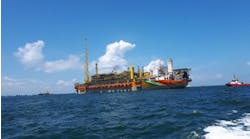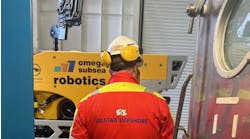A solution for limited resources
Richard Westney
Westney Project Services Inc.
The pressure to downsize, particularly in owner companies, has made leveraging a popular idea. And certainly, when implemented correctly, leveraging provides the perfect solution for an owner/ operator managing a big project with limited resources.
Leveraging, simply defined, is optimizing the company resources to maximize organizational effectiveness to meet business goals and project objectives.
Owner's organization plan key
Leveraging must be preceded by careful consideration of the owner/operator's organization plan. Normally, the plan is one of three models:
- The dominant owner
- The dominated owner
- The leveraged owner.
The dominant owner is the most prevalent model when the owner/operator is a supermajor. These companies have project portfolios that are large enough to justify an internal organization designed and staffed to ensure that project management and engineering best practices are effectively applied to all projects. Organization typically includes all the project management, engineering, procurement, and construction management disciplines. Their job is to ensure that each project meets its business goals. Normally, the goals are achieved through critical planning and scoping tasks themselves, and then working closely with contractors to ensure that expectations are met.
From the dominant owner perspective, this arrangement allows a high level of participation and the ability to control results, reducing risk.
Of course, many owner/operators do not have the internal capability to implement this model. After all, engineering and construction are not core businesses for any owner/operator.
More or less by default, owner/operators who cannot dominate the project find themselves in subordinate positions.
null
The dominated owner
Independents and "submajors" are most likely to follow the dominated owner model.
These companies usually do not have an internal organization that can perform all the project management and technical tasks. Instead, they are forced to rely heavily on contractors to perform the work.
The dominated owner provides few resources and must rely on the contractor to manage the project and perform the work.
Because the owner/operator is unable to participate directly in significant elements of the project, it is much more difficult to ensure the right decisions are made because the owner/operator is not in a position to make them.
The dominated owner knows that this low level of participation and control brings increased risk, but is willing to accept it in return for the benefit of a small project team.
Some owners and contractors see an advantage in this model because it gives contractors the freedom to use their creativity and experience to benefit the project. While this advantage is certainly realized in some cases, it is often offset by the fact that contractors are unlikely to succeed when working for an owner/operator that is not able to perform critical owner responsibilities, such as scope management, decision-making, and financial management.
Of course, no one likes the idea of unnecessary risk. So, most owners, even supermajors, are intrigued by the question, "Is it possible to stay in control of a project, even with a small owner team?" The answer lies in the concept of leverage.
Leverage
Leveraged owners have the best of both worlds. They fill the owner/operator role effectively, and in doing so, provide shareholders and partners with the capital stewardship they require. Leveraged owners have figured out how to do this without the necessity of large, internal project teams and organizations.
The leveraged owner leverages internal resources to manage the project while making optimum use of contractor capabilities to perform the work.
Leveraging requires owner/operators to decide how they will perform capital stewardship within their resources constraints. This means developing an owner/operator's organization plan that answers a few critical questions:
- What are the project's critical success factors?
- What are the responsibilities that the owner/operator must take on for the critical success factors to be achieved?
- What owner/operator resources can be made available to discharge these responsibilities?
- What external sources of resources can be mobilized to augment those of the owner/ operator?
The answers to these questions determine the leveraging strategy.
Critical success factors define the project objectives that must be achieved to meet the overall business goals. They typically include performance objectives for safety, schedule, cost, and quality. Other strategic objectives, such as developing goodwill by the host government and community, can also be important significant objectives.
Defining owner/operator responsibilities
Although it is tempting to think otherwise, the fact is that the owner/operator is 100% responsible and accountable for achieving the critical success factors. This responsibility cannot be delegated. Once this fact is accepted, it is a straightforward exercise to determine what specific owner responsibilities are associated with each critical success factor as well as what responsibilities can be delegated to contractors.
For example, one critical success factor is to achieve first oil by a certain date. For this to happen, the owner/operator may have certain responsibilities, such as developing and maintaining an integrated project master schedule that includes work delineated by functions, i.e., geology and geophysics, operations assurance, and startup, as well as work allocated by contractor, i.e., drilling, engineering, fabrication, and installation.
An estimate can be made of the level of effort and number of resources needed once the owner/operator responsibilities are determined.
Project teams are often constrained by the quantity, experience, and skills of personnel who are available from the ranks of owner/operator employees. It is certainly desirable for key roles on the owner/operator's project management team to be filled by owner employees. These roles might include: project manager, engineering manager, operations manager, and health, safety, and environment manager.
There are many service providers that can provide technical and project management resources to augment those of the owner's team. In addition to agencies, there are organizations that specialize in technical or project management areas and bring work processes, methods, and systems to the project. These organizations must be able to function as a seamless extension of the owner's team, and this works best when they are not competitors of the contractors whose work the team must manage and control.
NOTE: This is part of a series of articles considering lessons learned in managing offshore construction and installation projects. This article focuses on leveraging.






